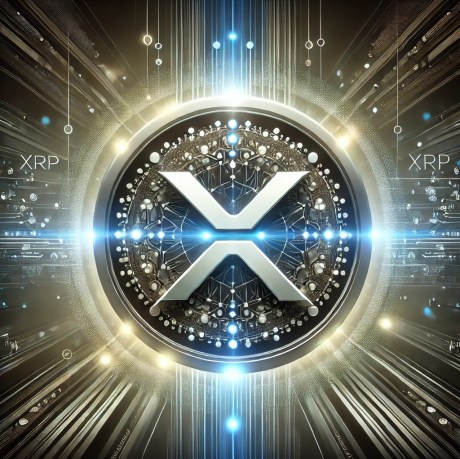Thanks to the thriving technology that has been dominating our lives for the past couple of years, we have all types of bots that help us with work, and leisure.
Today, virtual assistants can perform a variety of actions. After hearing the wake word, you simply tell them your command such as turn the lights on or off, answer questions, play music, place online orders, etc.
We even have self-driving cars and apps that have been making our lives way so much easier and efficient.
Of course, trading systems wouldn’t be an exception to the growth of technology.
It has been the dream of many to have the perfect automated trading system that could guarantee profits, whilst requiring little input from the traders themselves.
Whilst there are many automated trading systems available today, there are a few burning questions which need to be answered.
So, what are the pros and cons of such automated trading systems?
What Is An Automated Trading System?
Before we go into the pros and cons of this trading technology, let’s break down what it actually means and what it does.
Traders can now enjoy this automated trading system (ATS for short), which is basically a digital program that creates orders and automatically submits them to a market centre or exchange.
Through this system, the orders will be automatically generated based on a predefined set of rules using a trading strategy.
This is often depending on technical analysis, but can also be based on input from other electronic sources.
Automated trading systems typically require the use of software linked to a direct access broker, and any specific rules must be written in that platform’s proprietary language.
Today computers can execute orders faster than us humans, and in most cases with much fewer errors.
The Good Stuff
The Forex industry is one of the leading markets when it comes to trading.
Especially if you are a beginner you should know that trading stocks come with risks, and it is highly advised that “you do your own homework” before actually start investing.
Such systems are usually used in automated market centres, including electronic communication networks, “dark pools”, and automated exchanges.
The below should be a good start to familiarize yourself with the pros and cons of automated trading systems offered in Forex.
To begin with, it’s a huge plus that investors of any experience can access these systems.
For instance, on the EverFX website, you can find a number of video tutorials and educational articles, and it is an impressively global brokerage.
This could work great for beginners as well as experienced traders, and, their MT4’s Expert Advisors allow a high degree of trading automation.
So, whether you are a beginner or professional, you might find this option very helpful when trading.
They also offer free demonstration models, so that users can familiarise themselves with the program before using it on their live trading account.
Also, since the systems will automatically execute your trades as instructed, this eliminates the emotional factor when trading.
The well-known Warren Buffett once stated, “If you cannot control your emotions, you cannot control your money.”
Continuing, as we mentioned above, computers respond a lot faster than humans execute orders.
This is very useful and important when trading, as time is literally money in this case.
Getting in or out of a trade a few seconds earlier can make a big difference in the trade’s outcome.
Once a position is entered, all other orders are automatically created, including protective stop-losses and also profit targets.
Additionally, discipline is key when trading.
This is because emotions can harm investments, discipline is frequently affected.
The fear of losing, or not taking initiative, can potentially harm your investments. Automated trading helps avoid this issue, and make sure that discipline is retained because the trading plan will be followed precisely.
The Bad Stuff
The theory behind these systems is that you program the orders you want automatically generated, and technology will take care of the rest.
Unfortunately, however, there are also some important disadvantages when it comes to automated trading systems.
Firstly, these systems solely rely on technology. Depending on the trading platform, a trade order could actually reside on a computer, and not a server.
You might not consider this as a disadvantage at first, but imagine if your internet connection for some reason fails, the order might not be sent as scheduled.
There could also be a discrepancy between the so-called hypothetical trades generated by the strategy, and the order entry platform component that turns them into real trades.
This brings us to the next disadvantage, that of monitoring.
Although it sounds amazing that you can turn on your computer and let the trades run smoothly through the system, trades require frequent monitoring.
This is due to the potential for mechanical failures, such as connectivity issues, computer crashes or power losses, and system quirks.
If you monitor the system, there are fewer chances for things to go really wrong.
Last but not least, automated trading systems often claim to be very reliable and trustworthy.
We highly advise to test and practice before you trust a system 100%.
Unfortunately, when it comes to automated trading systems many third-party solutions fail to live up to their promises.
An example of what can happen when the automated trading system makes an error is that which cost Knight Capital over $440 million in half an hour back in August 2011.
The company recognized the loss to new software which rapidly bought and sold millions of shares in over one hundred different companies just after the markets opened.
Those trades pushed the value of the companies in question up, which caused Knight Capital to suffer a loss when they came to sell the now overvalued stock back into the market.
Another example is that of the 2010 Flash Crash when according to the Guardian, the US Wall Street was gripped by mounting anxiety about the Greek debt crisis.
The euro was falling against the dollar and the yen, but despite the turbulent start to the trading day, no one had expected the near 1,000-point dive in share prices.
In a matter of minutes, the Dow Jones index lost almost 9% of its value in a sequence of events that quickly became known as “flash crash”.
Hundreds of billions of dollars were wiped off the share prices of household name companies like Proctor & Gamble and General Electric.
Dominating The Trading World
After reading this article, we hope you can now answer questions such as: what is automated trading?
The majority of traders should expect a learning curve when using automated trading systems.
The best way is to familiarize yourself first and start trading with small sizes until you feel more comfortable.
Take your time to experience different automated trading systems, until you find the one that suits you best.
Mechanical failures can happen and systems need frequent monitoring.
Server-based platforms might provide a solution for traders who want to diminish the risks of mechanical failures.
It is recommended by many professional traders however, to use a hybrid approach, consisting of manual and auto trading to achieve the best results.
Image by Fathromi Ramdlon from Pixabay























